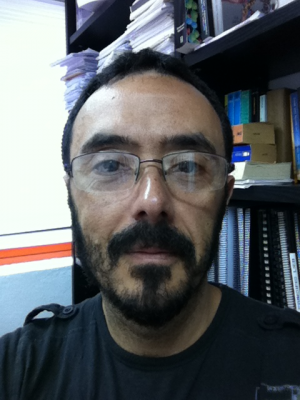First name: Ángel
Family name: Martín Pendás
Birth date : 04/04/1965
e-mail: ampendas@uniovi.es
URL Webs: qtcovi.grupos.uniovi.es
ORCID: 0000-0002-4471-4000
->DOWNLOAD FULL CV<-
Lecture 23: Ángel Martín Pendás
Is the one-particle approximation biasing our interpretation of real space chemical bonding descriptors? The cases of the Laplacian of the electron density and the electron localization function.
Ángel Martín Pendás
Dpto. Química Física y Analítica. Universidad de Oviedo. Spain
Computational Chemistry has been dominated by one-particle pictures since Heitler and London showed how a reasonable wavefunction for dihydrogen could be built from the atomic orbitals of the hydrogen atom [1]. After numerical calculations became worldwide accessible, the computational superiority of molecular orbital theory over other competing schemes led to the present situation, where Chemistry is basically understood in terms of one-electron functions. This has been aggravated by the undeniable success of density functional theory over the last 30 years. Although a first sin of the orbital picture, non-invariance under orbital transformations, is easily solved by appealing to reduced density matrices, it has been the case that only the electron density has been used widely, both because it is experimentally accessible and the basis of the QTAIM [2]. We explore here to what extent collapsing the N-electron information contained in the full wavefunction may lead to biased interpretations when only a one-electron section of its square is analyzed. To that end, we compare the 3N-dimensional maxima of the square of the full wavefunction [3] to two widely used descriptors: the Laplacian of the electron density, and the electron localication function (ELF). Several interesting insights and warnings will emerge [4].
References
[1] W. Heitler, F. London, Z. Phys. 44, 455 (1927).
[2] R. F. W. Bader. Atoms in Molecules, a Quantum Theory. Oxford Univ. Press. Oxford. 1990.
[3] A. Lüchow, J. Comput. Chem. 35, 854 (2014).
[4] M. Menéndez-Herrero, J. Munárriz, E. Francisco, A. Martín Pendás. J. Chem. Phys. 156, 164103 (2022).


